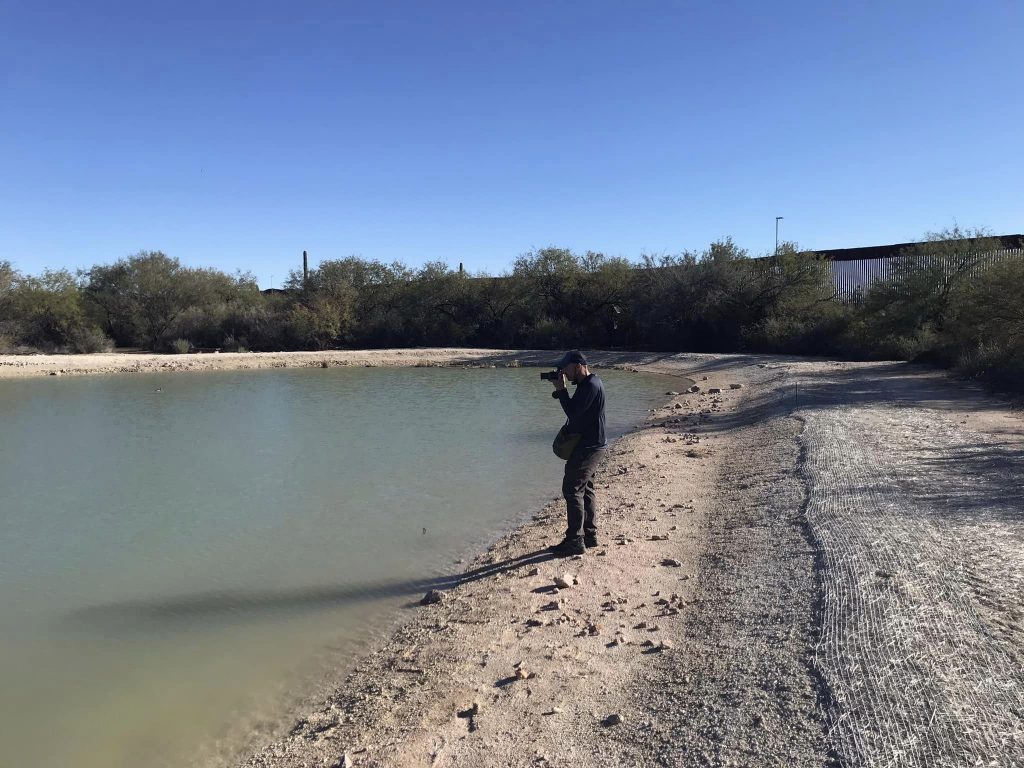For our winter vacation this year, we decided to make our way down to the Organ Pipe Cactus National Monument on the Arizona/Mexico border.
The park was infamous for the tragic murder of a park ranger there back in 2002. Though sensationalistic stories play up the “most dangerous park“ angle over the years, the park service takes a more pragmatic approach and rightfully notes that driving and heat present more danger than human interaction.
I’d have more concern for crime in Providence at night than migrants who avoid people or smugglers (ditto).
Awareness, not fear, is the correct response.

However, people tend to fearmonger and assume the worse because of their prejudices –

But Joan and I did get lucky.
We had five days in an incredibly diverse ecosystem with a desert much lusher than our home, saw amazing sunsets, and had arguably the best camping spot in the sublime Alamo Campground before it became soon-to-reserved by rec dot gov (bastards!) only.


We enjoyed the near solitude of the campground, the nearby hiking, and the nightly light shows of the winter sun in the Sonoran desert.



We found our time spent there as easily one of the highlights of 2022.
~~~
On our first morning, Joan whipped up a scrumptious camp breakfast and properly filled us up for the morning hikes.

And what a hike we found by briefly following a trail and then working our way up one of the canyon forks.


We found a verdant canyon full of running water. Unlike our high desert, the Sonoran Desert gets two rainy seasons a year and seems comparatively lush. Later in our visit, one sign stated that a Saudi Arabian prince proclaimed, “This is not a desert. It’s a garden!”



With the green and water, we could not help but share this same astonishment.



Some of those winter rains came at night, but we stayed warm and dry in our shelter. Unlike other parties in the campsite (a single-wall rooftop tent, truck campers), we did not suffer any condensation problems and stayed much drier.

The clouds before the rain looked ominous in some ways but did give us another memorable light show.

But the morning meant sunshine, if cold weather, and lots of hot coffee to jump-start the day.

Our hike for the day meant walking among some of the northernmost organ pipe cacti and spotting some even rarer senita cacti.


And the previous rains brought out the blooms of the ocotillo as well.


After our hike, we stopped at the visitors center to inquire about a backpacking permit. One area of the park, in particular, intrigued us due to its location on the Salt Trail, which formed part of a Pre-Columbian trade route from the Sea of Cortez (only an hour or so away by driving) up to our area of the desert and beyond.
Though the rangers had no issues issuing a backpacking permit for most of the park, they suggested that this zone had much border activity and was not something we may want to pursue.
Taking the advice, we decided to stay at our gorgeous campsite for some additional time.

It’s not an exaggeration to state that the time spent in this campground, with its solitude and beauty, added much to our trip.

We again enjoyed the morning light over hot beverages and savored the spot we called home for a few days.

Our hikes the following day brought us to the further reaches of the park along a road suggested for 4WD and higher clearance vehicles only. It is not an issue for our Tacoma; it lets us access areas different from where we spent the past few days.


On the saddle of a ridge, the border patrol helicopter seemed to take an interest in us in this otherwise empty area.

After this moment of US government interest, we returned and enjoyed another hike in a former mining area that proved quieter.

Another essential part of the experience was seeing the border wall dividing this ecosystem and historical area. In the sight of the wall, you can see Quitobaquito Springs, which provides water for much wildlife and shows evidence of human habitation going back millennia. And still a vital part of the pilgrimage path for the modern Tohono O’odham people.

With the long sweep of history and the even longer sweep of nature, I suspect the wall is merely another ebb and flow in time.


PCO Joan. The NPS is currently replanting the spring area with native plants.
The source of the spring itself still seemed lush and vibrant and persisted long before this wall along the border.
Video from Joan
We spent our last night with another stunning display of evening light.


The following morning, we took one last hike before saying farewell to this lush and enticing desert.

A desert I know we’ll return to and see more of in the years ahead.


Loved hearing about your trip to this “garden” desert. Did you get a new camera? Your photos seem even more amazing than before. Some of your portraits are particularly great this time and I love that picture of Joan + breakfast. Thanks for continuing to give inspiration of great places to hike/camp/explore.
I did a deeep clean of my canon camera (pan cake photo) and using my newer phone for some portrait work and lower light conditions. All in all, it works well. Thanks for the kind words!